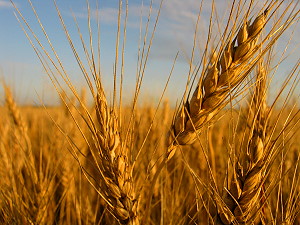 Northwest Region Crop Report Prepared by: Manitoba Agriculture
Northwest Region Crop Report Prepared by: Manitoba Agriculture
August 24, 2021 |
Northwest Region
Precipitation setting in mid-week slowed harvest progress down for most of the region. While temperatures started out high beginning of the week, cooler and wet weather set in for the remainder. Temperature high for the region was 33°C in Swan River, while the regional low reached 0°C in The Pas for a short period. With the exception of The Pas receiving minimal rain, precipitation amounts ranged from 30 mm in Swan Valley and Roblin; 91 mm in Ethelbert; and Reedy Creek receiving the most at 120 mm.
Field Pea harvest is approximately 95% complete. Yields have been lower and range from 35 to 40 bu/ac for most of the region and of average quality so far.
Spring wheat harvest slowly continued across the region, including a start in The Pas. Yields so far across and within the region have been very variable. Average yields for the region have been 40-60 bu/ac with better fields averaging 70-80 bu/ac. Yields in The Pas averaged 80 bu/ac. Harvest progress across the region is approximately 35 to 40% complete.
Canola continues in variable staging and condition. Most of the canola is podded and ripening. Desiccation and swathing is underway as stages are reached and conditions have allowed. About 50% of the canola is rated as good, while the remainder would be fair/poor. Sunscald and heat blast is evident in most canola with the previous high temperatures.
Flax bolls are filled and crop continues to ripen. Soybeans across the region are in the R5 to R6 staging, with the southern part of the region being more advanced. Approximately 60% of the soybean crop is rated as good condition.
Dismal hay and pasture conditions remain, particularly for much of the eastern side of the region. Beef producers continue to source feed because many hay fields will not have sufficient growth for a second cut. Once favourable weather conditions return, harvesting of annual fields for silage or greenfeed and the widespread baling of straw will resume. Additionally, ditch hay will be cut where possible. Culling of cattle herds is ongoing with animals being shipped to market. Water supply is low and many producers have been hauling water and supplemental feed to pastures.
Recent rains are helping to replenish soil moisture conditions and improve water availability and quality for livestock on pasture. The moisture is greening up pastures, however in many cases; the precipitation may be too late for additional growth. It will also aid in slowing grasshopper feeding which has been devastating to many pastures and hay fields.
